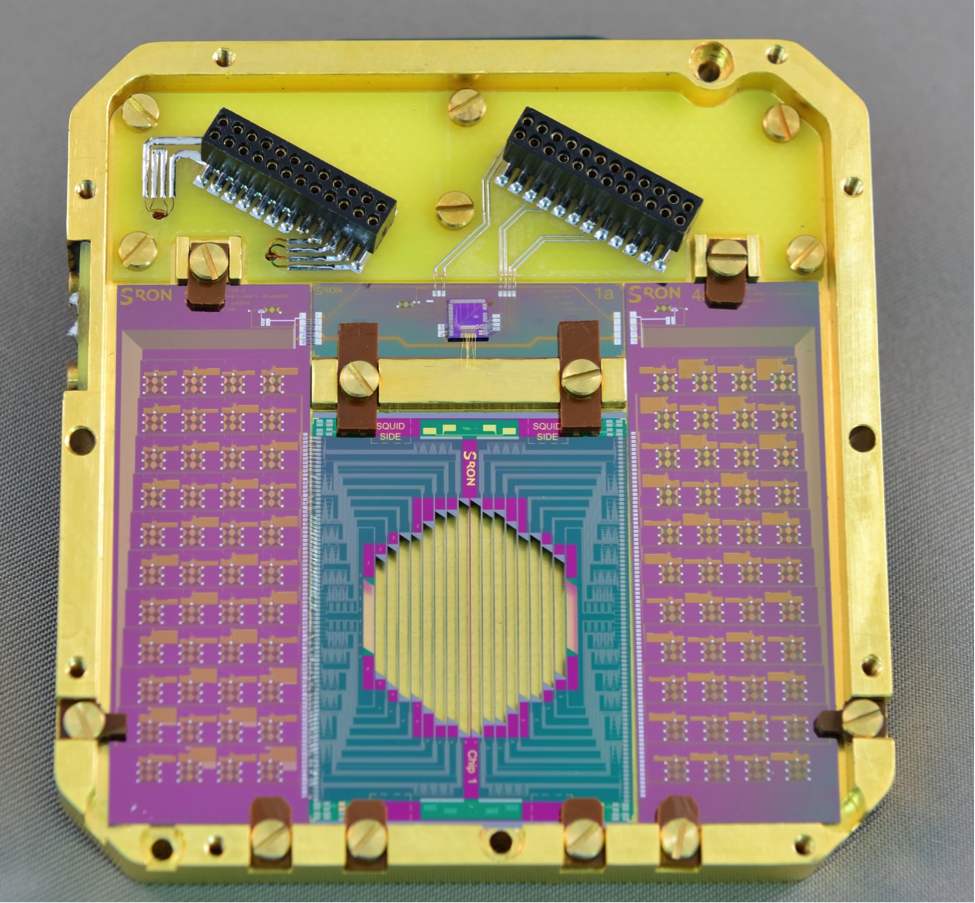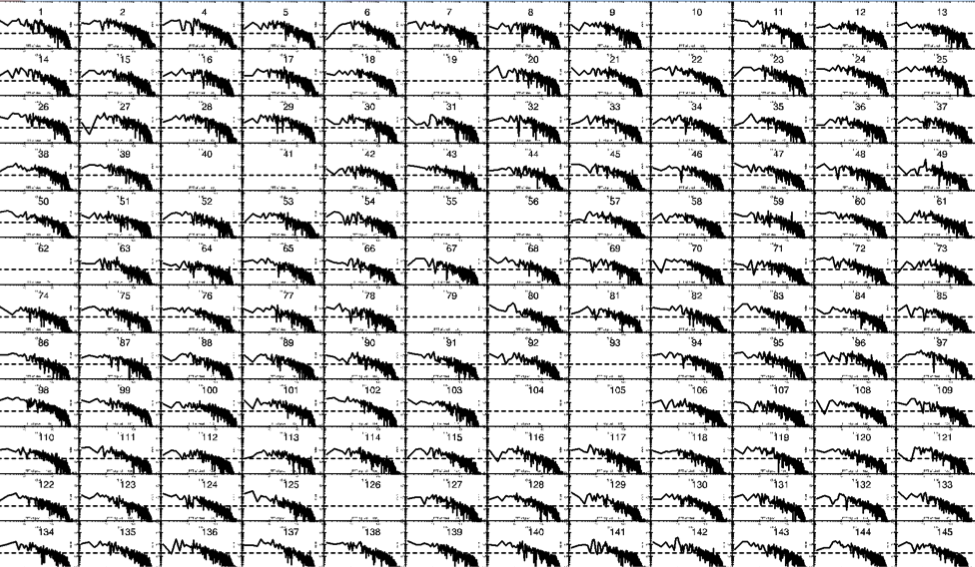Successful experimental demonstrations on TES detectors in the laboratories of SRON have paved the way for future far-infrared satellite mission SPICA, with the instrument Safari. SRON researchers have recently made groundbreaking achievements in the development of both the simultaneous readout of multiple pixels and the sensitivity of the TES-detectors.
This demonstrates the feasibility of the far-infrared mission SPICA/Safari, which is to be proposed to the European Space Agency (ESA), as answer to ESA’s M5 call for medium-sized space missions. SPICA/Safari could be a successor to the successfully completed far-infrared satellite mission Herschel with molecule hunter HIFI aboard.

Transition edge sensors (TES) are detectors with superconducting properties, that are extremely sensitive to temperature changes. When heated by incoming photons, they produce measurable current responses. Placed in arrays, sometimes even with thousand pixels, and read out by so called multiplexing techniques, they have already been applied in ground based telescopes.
SRON has been developing TES detectors to meet the demanding requirements of space telescopes, in particular for the SPICA/Safari mission. Safari will measure at infrared wavelengths from 34 to 210 micrometers, to cover the far-infrared part of the spectrum. This is best done from space, since earth’s atmosphere is an obstacle for the infra red light.
Half of the light that reaches Earths boundaries is in this far infrared spectrum that we can not see with our eyes or optical telescopes. SPICA’s cooled space telescope, together with Safari’s grating spectrometers and extremely sensitive TES-arrays, will reveal mysteries in the universe and answer outstanding questions on the origin of galaxies, stars, and planets.
Readout of a TES array

Challenges of the TES technology used in a space mission are not only the extreme sensitivity, but also the multiplexing readout technology that is required. Without multiplexing to combine many pixel signals in a single wire, amplifiers and their connecting wires for each pixel would generate too much heat, influencing the cooling of the detector environment.
After about 8 years effort, SRON researchers, Richard Hijmering and his co-workers, have demonstrated that a frequency division multiplexing (FDM) system developed for Safari can read out 132 TES pixels simultaneously, using a single SQUID amplifier. This has been achieved without a noise penalty, in other words, without loss of the detectors’ extremely high sensitivities. This confirms the feasibility of the readout scheme of Safari, for which 160 pixels/per SQUID are targeted. This breakthrough was reported recently at the international astronomical telescopes andinstrumentation conference (SPIE) in Edinburgh (UK).
Sensitivity
In a separate experiment SRON researchers, Pourya Khosropanah and his colleagues, have optimized the TES detectors and achieved record sensitivity in a prototype TES-array. Khosropanah reported so called noise-equivalent powers (NEP) as low as 1×10^19 Watts/Hertz^1/2. This meets the required sensitivities of the SPICA/Safari mission. NEP is the most important figure of merit for TES-detectors, and this electrical NEP can be converted into an optical NEP if one knows the optical coupling efficiency. SRON researchers, Damian Audley and his collaborators, improved the optical coupling efficiency in TES detectors, reaching 60% in this never explored wavelength band of 30 – 60 micrometers.
These achievements show the SPICA/Safari instrument to be technically feasible. Furthermore, scientists will also refer to these achievements when developing the Far-IR Surveyor mission, to be proposed to NASA.


